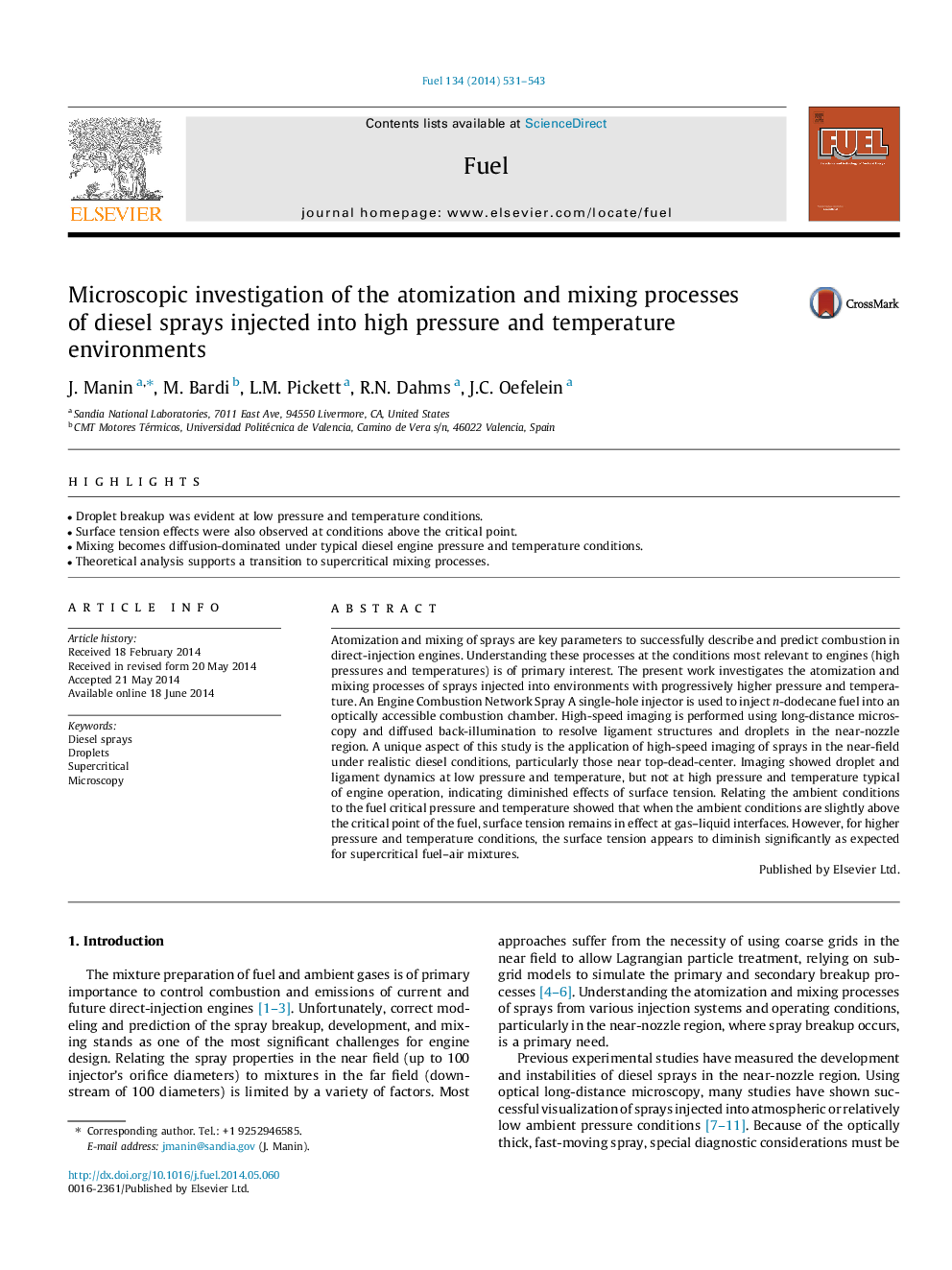| Article ID | Journal | Published Year | Pages | File Type |
|---|---|---|---|---|
| 6637304 | Fuel | 2014 | 13 Pages |
Abstract
Atomization and mixing of sprays are key parameters to successfully describe and predict combustion in direct-injection engines. Understanding these processes at the conditions most relevant to engines (high pressures and temperatures) is of primary interest. The present work investigates the atomization and mixing processes of sprays injected into environments with progressively higher pressure and temperature. An Engine Combustion Network Spray A single-hole injector is used to inject n-dodecane fuel into an optically accessible combustion chamber. High-speed imaging is performed using long-distance microscopy and diffused back-illumination to resolve ligament structures and droplets in the near-nozzle region. A unique aspect of this study is the application of high-speed imaging of sprays in the near-field under realistic diesel conditions, particularly those near top-dead-center. Imaging showed droplet and ligament dynamics at low pressure and temperature, but not at high pressure and temperature typical of engine operation, indicating diminished effects of surface tension. Relating the ambient conditions to the fuel critical pressure and temperature showed that when the ambient conditions are slightly above the critical point of the fuel, surface tension remains in effect at gas-liquid interfaces. However, for higher pressure and temperature conditions, the surface tension appears to diminish significantly as expected for supercritical fuel-air mixtures.
Related Topics
Physical Sciences and Engineering
Chemical Engineering
Chemical Engineering (General)
Authors
J. Manin, M. Bardi, L.M. Pickett, R.N. Dahms, J.C. Oefelein,
